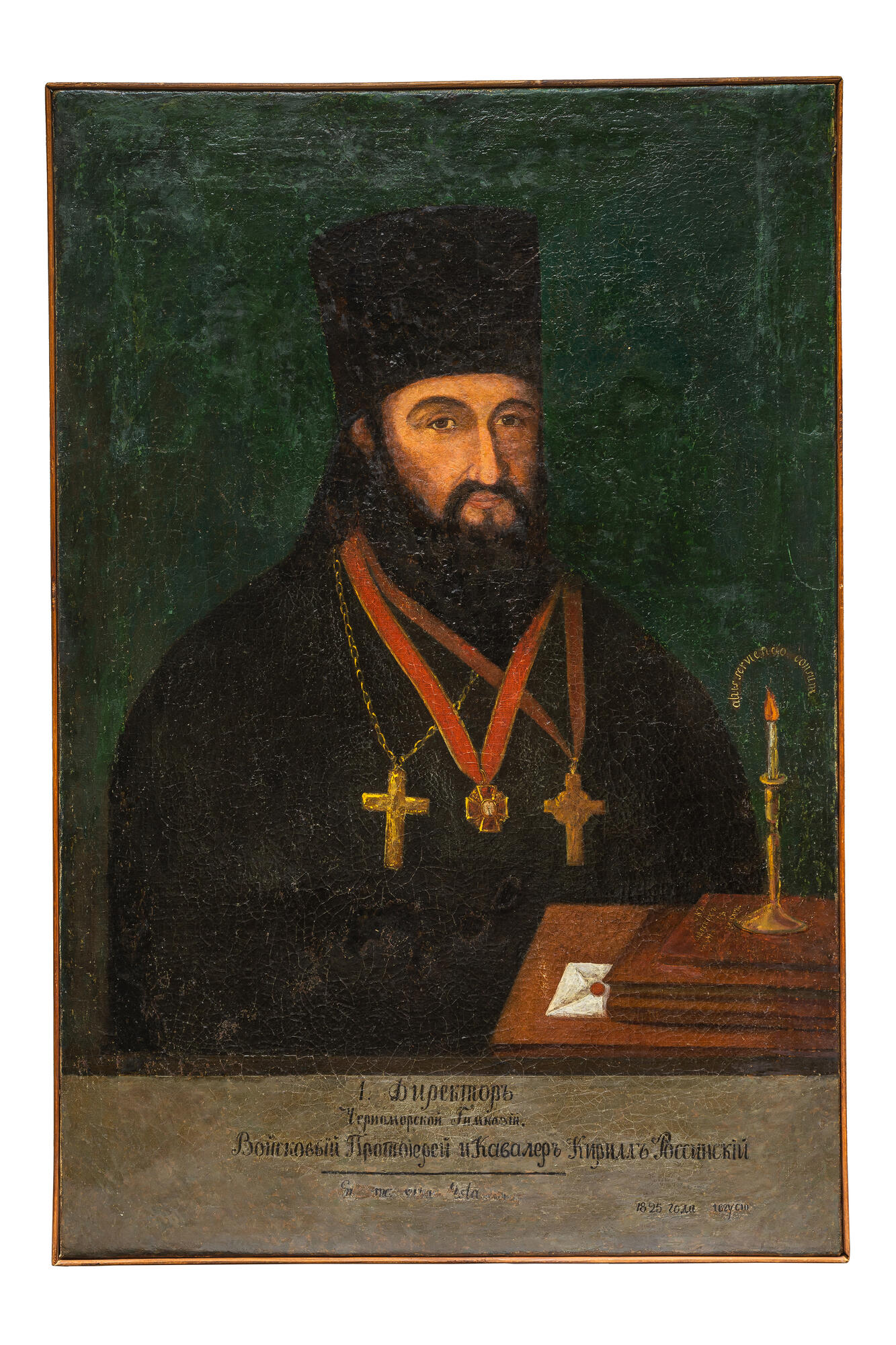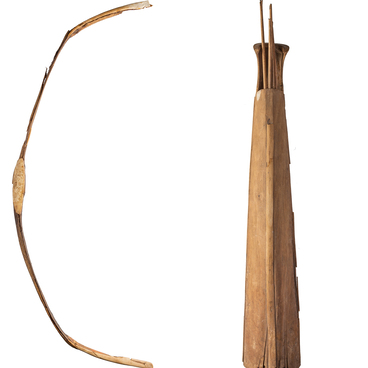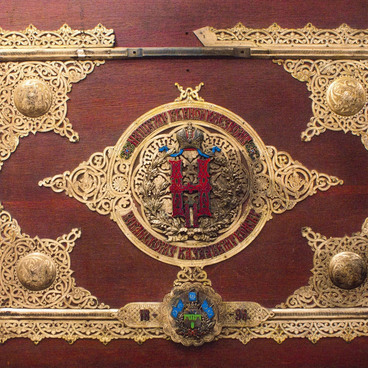The collection of the State Historical and Archaeological Museum named after E. D. Felitsyn contains the only portrait of Kirill Rossinsky that was painted during his lifetime. Kirill Rossinsky was the educator of the Black Sea region, the first director of the Black Sea Gymnasium and a Military Archpriest. The portrait was created by an unknown artist shortly before Rossinsky’s death — in 1825.
Kirill Rossinsky was born on March 17, 1774, in the city of Novomirgorod, in the family of a priest from Little Russia. He graduated from the Novorossiysk Theological Seminary, then worked there as a teacher, giving classes in Religious Education. In 1798, Rossinsky was ordained to the priesthood. He left his teaching job and in the summer of the same year returned to Novomirgorod to the Church of the Nativity of the Blessed Virgin Mary. There not only he conducted services and preached sermons, but also taught other clergymen.
In 1800, Rossinsky was transferred to Taganrog. And three years later, Archbishop Athanasius of Ekaterinoslav appointed him archpriest of the Black Sea Cossack Host and transferred him to Ekaterinodar (modern Krasnodar). At that time, there were very few priests in Kuban — about ten people — not enough to conduct full divine services in churches. Therefore, Kirill Rossinsky not only invited clergymen from other provinces but also selected and educated the residents of the region, whom he then ordained. In addition, he collected funds for the construction of new churches: a total of 27 churches were erected in different Kuban villages during the time of his service.
Since 1806, Kirill Rossinsky supported education in the Black Sea region. Thanks to his support, the school in Ekaterinodar was transformed into a parish specialized school. The money for the maintenance was allocated from the field executive office — 1500 rubles annually. Rossinsky invited teachers from other provinces. He taught Religious Education there. The archpriest supported several students from poor families at his own expense.
Over the next 13 years, Kirill Rossinsky founded more than 10 schools in Kuban — in Grivenskaya, Kushchevskaya, Shcherbinovskaya, Plastunovskaya, and other villages. In Ekaterinodar, in 1818, he opened a parochial school, where priests were educated, and in 1820 — the first city gymnasium, which he headed. Rossinsky insisted that the students in the gymnasium were taught not only general education sciences but also the basics of military affairs, fine arts, Greek, political economy and commerce.
At the beginning of 1825, Kirill Rossinsky fell ill and soon died. He was buried in the Ekaterinodar Host Resurrection Cathedral, to the left of the altar. A street in Krasnodar and one of the city’s universities are named after Rossinsky.
Kirill Rossinsky was born on March 17, 1774, in the city of Novomirgorod, in the family of a priest from Little Russia. He graduated from the Novorossiysk Theological Seminary, then worked there as a teacher, giving classes in Religious Education. In 1798, Rossinsky was ordained to the priesthood. He left his teaching job and in the summer of the same year returned to Novomirgorod to the Church of the Nativity of the Blessed Virgin Mary. There not only he conducted services and preached sermons, but also taught other clergymen.
In 1800, Rossinsky was transferred to Taganrog. And three years later, Archbishop Athanasius of Ekaterinoslav appointed him archpriest of the Black Sea Cossack Host and transferred him to Ekaterinodar (modern Krasnodar). At that time, there were very few priests in Kuban — about ten people — not enough to conduct full divine services in churches. Therefore, Kirill Rossinsky not only invited clergymen from other provinces but also selected and educated the residents of the region, whom he then ordained. In addition, he collected funds for the construction of new churches: a total of 27 churches were erected in different Kuban villages during the time of his service.
Since 1806, Kirill Rossinsky supported education in the Black Sea region. Thanks to his support, the school in Ekaterinodar was transformed into a parish specialized school. The money for the maintenance was allocated from the field executive office — 1500 rubles annually. Rossinsky invited teachers from other provinces. He taught Religious Education there. The archpriest supported several students from poor families at his own expense.
Over the next 13 years, Kirill Rossinsky founded more than 10 schools in Kuban — in Grivenskaya, Kushchevskaya, Shcherbinovskaya, Plastunovskaya, and other villages. In Ekaterinodar, in 1818, he opened a parochial school, where priests were educated, and in 1820 — the first city gymnasium, which he headed. Rossinsky insisted that the students in the gymnasium were taught not only general education sciences but also the basics of military affairs, fine arts, Greek, political economy and commerce.
At the beginning of 1825, Kirill Rossinsky fell ill and soon died. He was buried in the Ekaterinodar Host Resurrection Cathedral, to the left of the altar. A street in Krasnodar and one of the city’s universities are named after Rossinsky.



